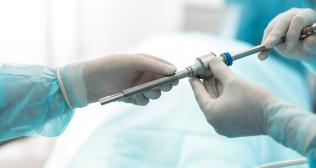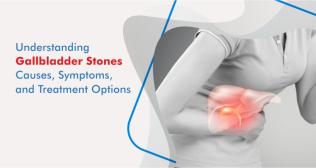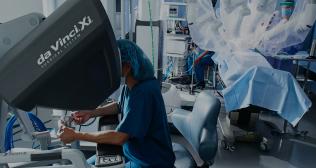
What is Laparoscopy and it's Procedures & Outcomes
About Laparoscopy
Laparoscopy is a surgical procedure employed to assess the organs present in the abdomen or, in women, the pelvic organs.
Laparoscopy involves using a thin, lighted tube that has a video camera. The tube is termed a laparoscope. It is inserted through a tiny cut (incision) in the stomach. The images sent by the video camera pictures can be viewed on a computer screen.
One advantage of laparoscopy is that it is minimally invasive. Laparoscopy often takes less time and is associated with a faster recovery than conventional surgery. Laparoscopy might also be employed to obtain a tissue sample in case tissue testing is required. It can also be used for surgical procedures like:
- Laparoscopic Hernia Repair: It is a minimally invasive surgical technique employed for mending several types of hernia.
- Laparoscopic Hysterectomy: It refers to a vaginal hysterectomy performed with the help of a laparoscope, a thin, flexible tube containing a video camera. Thin tubes are inserted through small incisions in the abdomen near the navel. The uterus is then taken out in sections through the laparoscope tube or through the vagina.
- Laparoscopic Cholecystectomy: It is a minimally invasive surgical procedure used for the removal of a diseased gallbladder.
- Laparoscopic Cystectomy: It is the removal of ovarian cysts, or masses, using laparoscopy, a form of minimally invasive surgery.
Reasons for Performing Laparoscopy
Laparoscopic surgeries may be used for conditions such as pelvic inflammatory disease, appendicitis, and a few cancers, like ovarian cancer and hepatic cancer.
It’s also used for surgery to treat conditions like:
- Taking out organs like the appendix or gallbladder
- Mending hernias or bursts or bleeding stomach lesions
- Removing organs impacted by cancer, like the ovaries, prostate, or liver
- Treating an ectopic pregnancy
- Removing the womb
- Weight loss surgery.
A laparoscopy is often advised because the recovery time is more rapid than other types of surgery.
What Happens During a Laparoscopy?
Laparoscopy is usually performed in a hospital or an outpatient clinic. In general, it comprises the following steps:
- The patient will wear a hospital gown and lie on an operating table.
- Usually, the patient will receive general anesthesia. The medicine is injected into the bloodstream through an intravenous (IV) line inserted into a vein. You may also inhale a gas from a mask to make you sleep.
- To conduct the laparoscopy, the surgeon will:
- Make a small cut near the belly button.
- Put carbon dioxide gas into the belly to open up space between organs so it’s easier to observe them.
- Insert the laparoscope and miniature camera into the belly.
- Move the laparoscope to glance at the organs and glands on a computer screen.
- If the patient requires a biopsy or another procedure, the surgeon may require making more minor cuts to insert surgical tools.
- When the surgeon is done, the tools and most of the gas will be withdrawn from the body, and the small incisions will be closed and bandaged.
- After the surgery, the patient will be shifted to a recovery room. In most cases, the patient might be discharged after a few hours, but it depends on what procedures were done during the laparoscopy. Before the patient leaves, they’ll be provided with information about what to expect over the next few days at home.
Outcomes of Laparoscopy
- A low rate of reoperation
- Long-term improvement in pelvic pain, reproductive function, quality of life, and fertility outcomes
- A high satisfaction rate
- A low rate of post-operative complications
Risks Associated With Laparoscopy
Possible complications may include bleeding from the incision, injury to the organs in the abdomen, or the carbon dioxide gas going into places other than the abdomen.
Sometimes, a laparoscopy is not advised. This may be the case if an individual:
- Has advanced cancerous growths on the abdominal wall
- Has chronic tuberculosis
- Has a bleeding problem
- Has plenty of scar tissue from other surgeries
- Is taking blood-thinning medications
Therefore, it is advisable to give the healthcare professionals a clear picture of existing health conditions before undergoing a laparoscopic procedure, and immediately seek medical attention if facing any complications post-laparoscopic procedure.
Popular Searches :
Hospitals: Cancer Hospital in Delhi | Best Heart Hospital in Delhi | Hospital in Amritsar | Hospital in Ludhiana | Hospitals in Mohali | Hospital in Faridabad | Hospitals in Gurgaon | Best Hospital in Jaipur | Hospitals in Greater Noida | Hospitals in Noida | Best Kidney Hospital in Kolkata | Best Hospital in Kolkata | Hospitals in Rajajinagar Bangalore | Hospitals in Richmond Road Bangalore | Hospitals in Nagarbhavi Bangalore | Hospital in Kalyan West | Hospitals in Mulund | Best Hospital in India | | Cardiology Hospital in India | Best Cancer Hospital in India | Best Cardiology Hospital in India | Best Oncology Hospital In India | Best Cancer Hospital in Delhi | Best Liver Transplant Hospital in India
Doctors: Dr. Rana Patir | Dr. Rajesh Benny | Dr. Rahul Bhargava | Dr. Jayant Arora | Dr. Anoop Misra | Dr. Manu Tiwari | Dr. Praveer Agarwal | Dr. Arup Ratan Dutta | Dr. Meenakshi Ahuja | Dr. Anoop Jhurani | Dr. Shivaji Basu | Dr. Subhash Jangid | Dr. Atul Mathur | Dr. Gurinder Bedi | Dr. Monika Wadhawan | Dr. Debasis Datta | Dr. Shrinivas Narayan | Dr. Praveen Gupta | Dr. Nitin Jha | Dr. Raghu Nagaraj | Dr. Ashok Seth | Dr. Sandeep Vaishya | Dr. Atul Mishra | Dr. Z S Meharwal | Dr. Ajay Bhalla | Dr. Atul Kumar Mittal | Dr. Arvind Kumar Khurana | Dr. Narayan Hulse | Dr. Samir Parikh | Dr. Amit Javed | Dr. Narayan Banerjee | Dr. Bimlesh Dhar Pandey | Dr. Arghya Chattopadhyay | Dr. G.R. Vijay Kumar | Dr Ashok Gupta | Dr. Gourdas Choudhuri | Dr. Sushrut Singh | Dr. N.C. Krishnamani | Dr. Atampreet Singh | Dr. Vivek Jawali | Dr. Sanjeev Gulati | Dr. Amite Pankaj Aggarwal | Dr. Ajay Kaul | Dr. Sunita Varma | Dr. Manoj Kumar Goel | Dr. R Muralidharan | Dr. Sushmita Roychowdhury | Dr. T.S. MAHANT | Dr. UDIPTA RAY | Dr. Aparna Jaswal | Dr. Ravul Jindal | Dr. Savyasachi Saxena | Dr. Ajay Kumar Kriplani | Dr. Nitesh Rohatgi | Dr. Anupam Jindal |
Specialities: Heart Lung Transplant | Orthopedic | Cardiology Interventional | Obstetrics & Gynaecology | Onco Radiation | Neurosurgery | Interventional Cardiology | Gastroenterologist in Jaipur | Neuro Physician | Gynecologist in Kolkata | Best Neurologist in India | Liver Transfer |



















